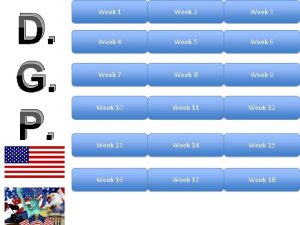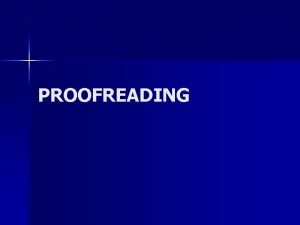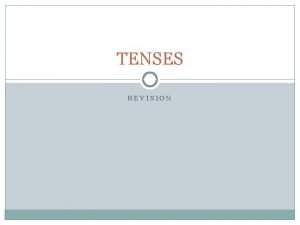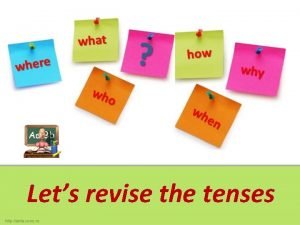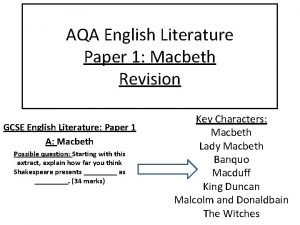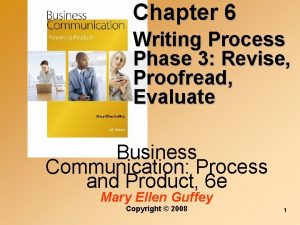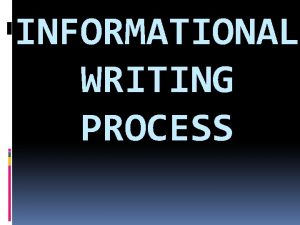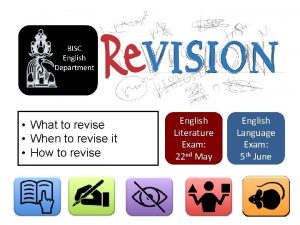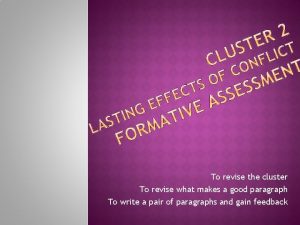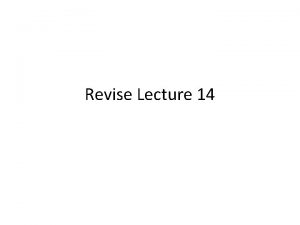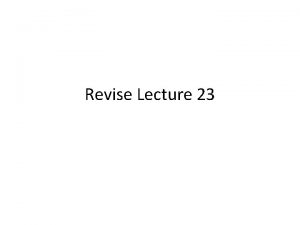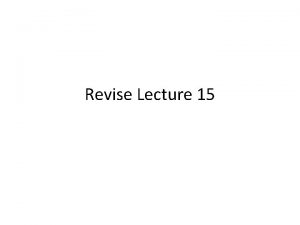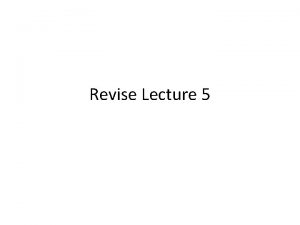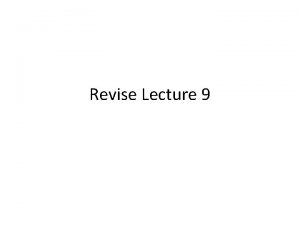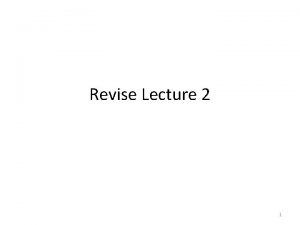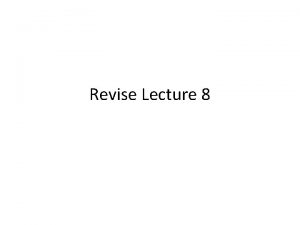Chapter 7 Writing Process Phase 3 Revise Proofread

















- Slides: 17

Chapter 7 Writing Process Phase 3: Revise, Proofread, Evaluate

Revising, Proofreading, Evaluating These are the final steps of the 3 x 3 writing process Step 1: Analyze, Anticipate, Adapt Step 2: Research, Organize, Compose Step 3: Revise, Proofread, Evaluate

Revising is: Improving the content and sentence structure of your message. Concentrate on: • Message clarity • Conciseness • Vigour • Readability

Revising Revise for clarity: • A clear message is one that is immediately understood. • Express rather than impress.

K. I. S. S. Keep It Short and Simple.

K. I. S. S. Example of an unclear sentence: Employees have not been made sufficiently aware of the potential adverse consequence involved regarding these chemicals. Example of a clear sentence: Warn your employees about these chemicals.

The Kitchen Test: If a sentence doesn’t sound natural in your kitchen, it needs revision.

Other Revising Tips Eliminate fillers Long lead-ins Redundancies Compound Prepositions Empty Words

Other Revising Tips • Transform wordy noun phrases into active verbs: Eg. -give consideration to ---> consider • Avoid overused business expressions such as: - Enclosed please find. - Please do not hesitate to.

Other Revising Tips • Use parallelism, headings and bullet lists to highlight ideas. • Use CAPITALIZED LETTERS, bold, italics and blank spaces to improve readability.

Proofreading Proofread after you’ve completed the first draft. Put yourself in a “find the errors mindset” and read slowly.

Proofreading Check for spelling, grammar, punctuation, names, numbers and format. Finally, If read the document once more. possible, find a friend to proofread.

Evaluating After revising and proofreading, it’s time to evaluate your message.

Evaluating Ask 1. 2. 3. 4. yourself: How successful will this message be? Does it say what I want it to say? Will it achieve my purpose? Does my message contain credible evidence?

Feedback is the best way to evaluate your writing. Feedback will allow you to improve your communication skills thanks to the receiver’s comments.

Bibliography Mary Ellen Guffey, Kathleen Rhodes, Patricia Rogin. Business Communications: Process and Product. United States. Nelson Education. 2010

Additional Resources For additional information about the Business Writing Process go to : http: //www. zenome. com/directory/ind ex. php? parent. ID=007. 063. 007&desc= 07 -
 Is the girl who sits behind rafael a better student than i
Is the girl who sits behind rafael a better student than i Proofread
Proofread Normal phase vs reverse phase chromatography
Normal phase vs reverse phase chromatography M tswett pronunciation
M tswett pronunciation Mobile phase and stationary phase
Mobile phase and stationary phase Mobile phase and stationary phase
Mobile phase and stationary phase Normal phase vs reverse phase chromatography
Normal phase vs reverse phase chromatography Line current and phase current
Line current and phase current Hplc detector types
Hplc detector types In a triangle connected source feeding a y connected load
In a triangle connected source feeding a y connected load Broad phase vs narrow phase
Broad phase vs narrow phase Revise present simple
Revise present simple Referee response letter
Referee response letter Remember simple present
Remember simple present How to revise english literature gcse
How to revise english literature gcse Reject and resubmit
Reject and resubmit Evaluate and revise in assure model
Evaluate and revise in assure model English literature paper 1 macbeth and inspector calls
English literature paper 1 macbeth and inspector calls
